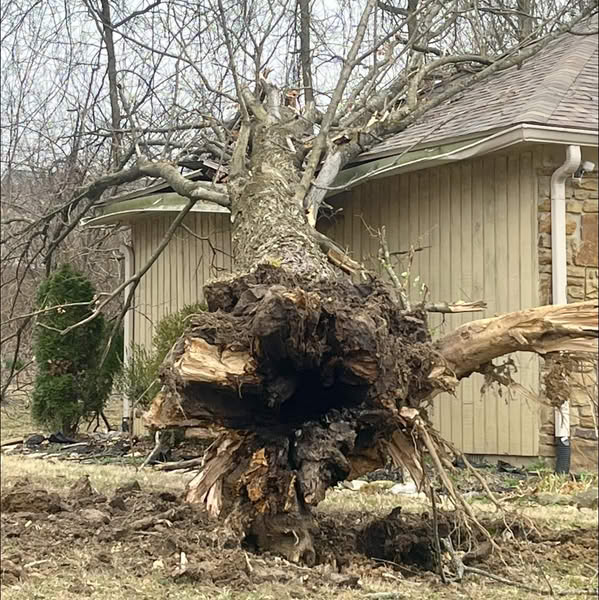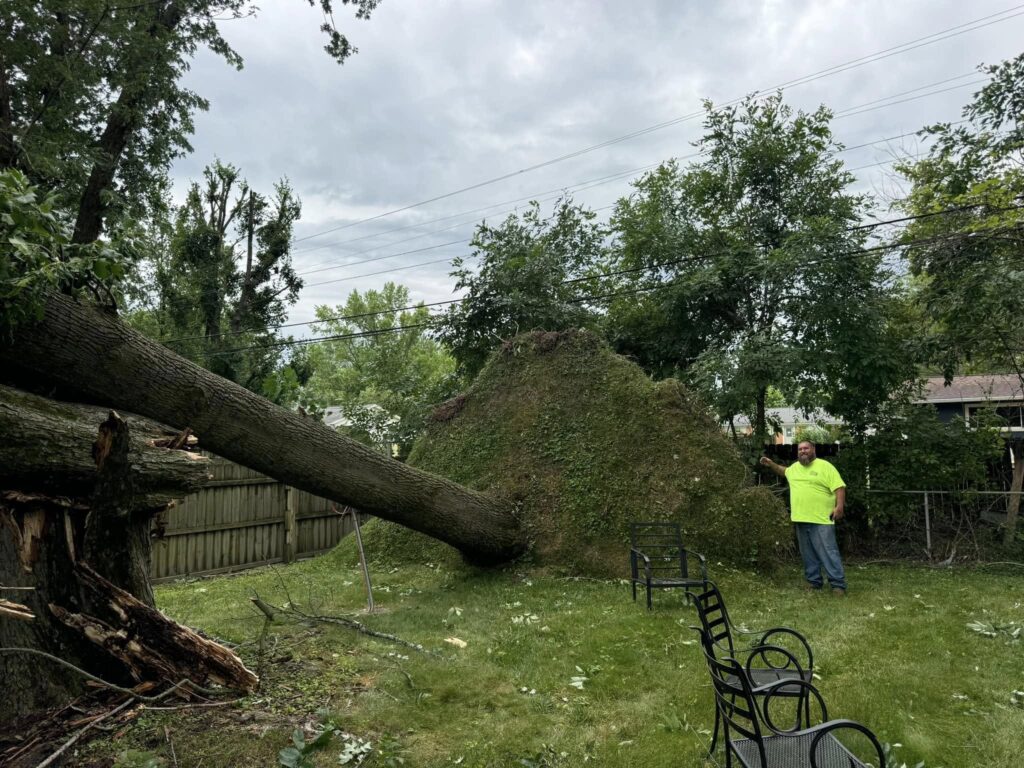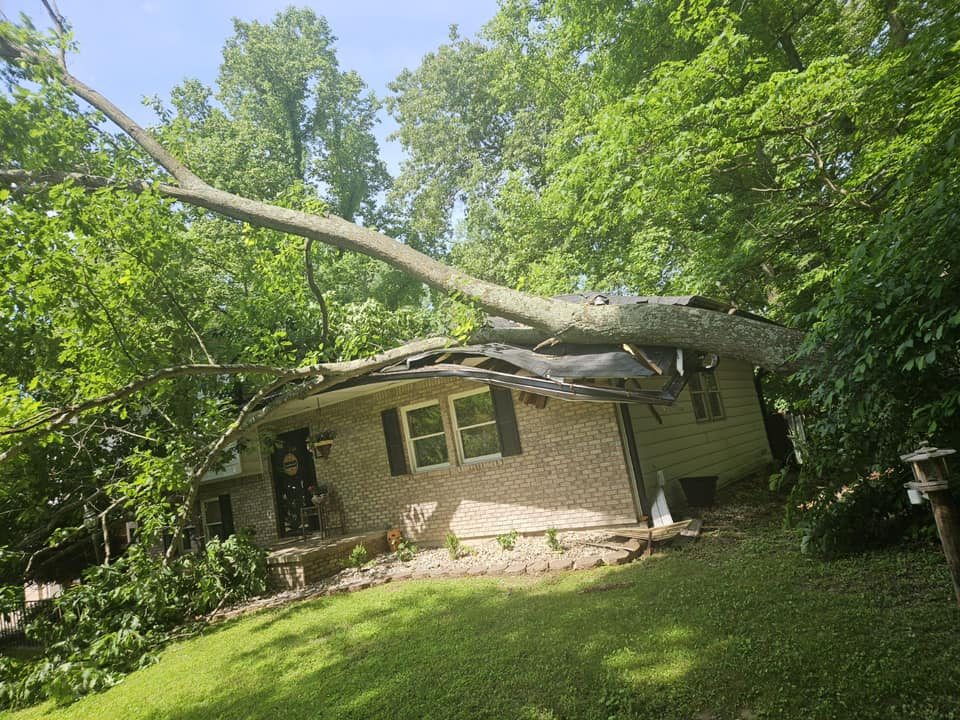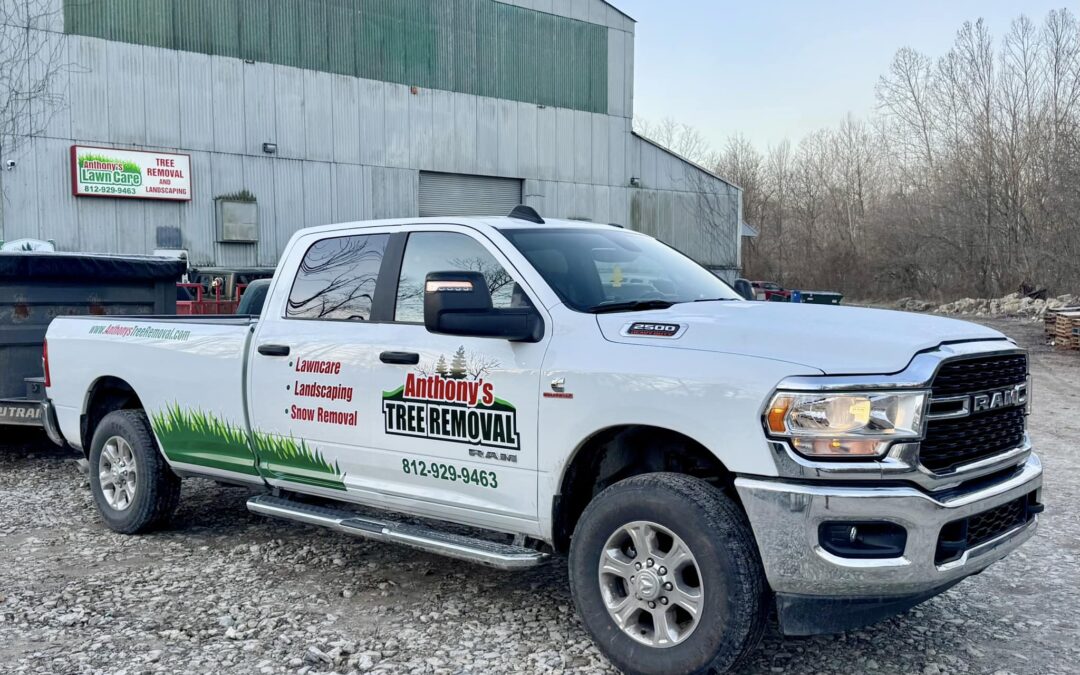Imagine this: you’re lounging on the couch, binge-watching your favourite show, when suddenly—CRASH!
A tree falls on your house, turning your peaceful home into a disaster zone. It’s the kind of situation no one wants to face, but it’s always a good idea to be prepared just in case.
If you’re wondering whether you should worry about a tree falling on your house, you’re not alone. Let’s break it down and see why it could happen and what you can do to prevent trees from falling.

Signs That a Tree Could Fall on Your House
When a tree falls on a house, it often doesn’t happen without warning. In fact, there are several signs that you can watch out for that could indicate your tree is in danger of collapsing. By recognizing these signs early, you can take proactive steps to avoid damage.
- Lean: If a tree suddenly starts leaning more than usual, especially after a storm, this could be a red flag. A tree that shifts its center of gravity may not be stable and could fall at any moment.
- Hollow or Decayed Trunk: Trees that show signs of decay, like large holes or peeling bark, are more likely to fall. The rot weakens the structure, making it less able to withstand heavy winds or other environmental factors.
- Dead or Dying Branches: A healthy tree has vibrant, living branches. If you notice that several branches are dead or snapping easily, this could indicate the tree is struggling and might eventually fall.
- Cracks in the Trunk or Roots: Look for cracks or splits in the trunk, especially at the base. Cracks can indicate that the tree is under stress, and if the root system is compromised, it’s only a matter of time before it topples.

The Risks of a Tree Falling on Your House
You may be wondering, “Is this really something I should worry about?” The truth is, a tree falling on your house can lead to a range of serious risks that you’ll want to avoid. These risks are not just about property damage, but safety concerns as well. Here are the main risks to keep in mind:
- Structural Damage: The most obvious risk is the damage a fallen tree can cause to your house. A large tree can puncture your roof, break windows, or even collapse entire walls. This could lead to expensive repairs that could have been avoided.
- Injury or Fatality: A falling tree is dangerous! In the worst-case scenario, it can seriously injure you or someone in your home. Never underestimate the potential for harm when trees start showing signs of instability.
- Fire Hazards: If a tree falls on power lines, it could spark a fire. Trees close to utility lines should always be monitored and trimmed regularly.
- Landscaping Destruction: Even if the tree doesn’t hit the house directly, falling trees can destroy your garden, landscaping, and outdoor furniture.

What To Do If a Tree Falls on Your House
If a tree does fall on your house, it’s important to take immediate action. Here’s what you should do to stay safe and get the situation under control:
- Call Emergency Services: If the tree has caused significant damage, or there is a danger of fire, call 911 immediately. Firefighters and emergency responders will help assess the safety risks and secure your property.
- Evacuate the Home: If the damage is severe, it’s better to evacuate your home and move to a safe location. Falling trees can create unstable conditions, and the risk of further damage or injury is high.
- Contact a Professional Tree Removal Service: One of the first steps you should take is to contact a professional tree removal service, such as Anthony’s Tree Removal in Bloomington, Indiana. They will have the expertise and equipment to safely remove the fallen tree and assess any other trees that might pose a risk to your home.
- File an Insurance Claim: Contact your home insurance company to report the damage and start the claims process. Having photos of the damage and a list of affected areas will help speed up the process.
- Prevent Future Falls: Once the immediate danger has passed, you’ll want to take steps to ensure this doesn’t happen again. Regular tree inspection and maintenance, such as pruning and removing weak trees, can reduce the risk of a tree falling on your house in the future.

How to Prevent Trees from Falling on Your Home
While you can’t control the weather or prevent storms, you can reduce the risk of a tree falling on your house with some preventative measures:
- Regular Tree Inspections: Have a professional tree service inspect your trees at least once a year. They can identify weak trees or dangerous conditions that may require attention.
- Pruning and Trimming: Regularly prune your trees to remove dead branches and reduce the overall weight. This will make the tree less likely to snap or fall during a storm.
- Tree Removal in Bloomington, Indiana: If you have a tree that’s showing signs of instability, it’s better to remove it before it causes any damage. Tree removal in Bloomington, Indiana can help keep your property safe by removing dangerous trees that pose a risk.
- Consider the Tree’s Location: Be mindful of the trees in close proximity to your house, especially those with large branches or root systems. Trees that are too close to your home are more likely to cause damage if they fall.
A tree falling on your house is no laughing matter—but with proper precautions and regular maintenance, you can minimize the risk. If you think a tree near your home is showing signs of instability, don’t wait for the worst to happen.
Contact Anthony’s Tree Removal in Bloomington, Indiana, today to schedule an inspection or tree removal before disaster strikes!
Call us at (812) 345-5694 now for a free consultation and ensure your home stays safe and secure.


Recent Comments